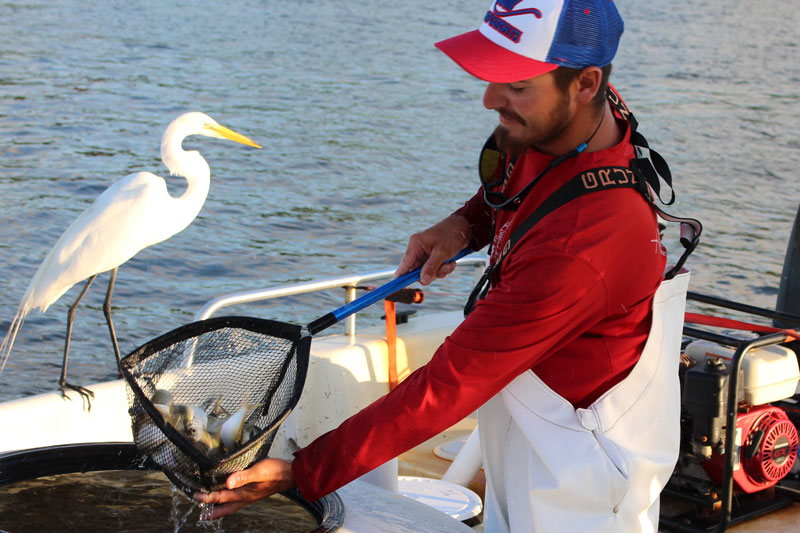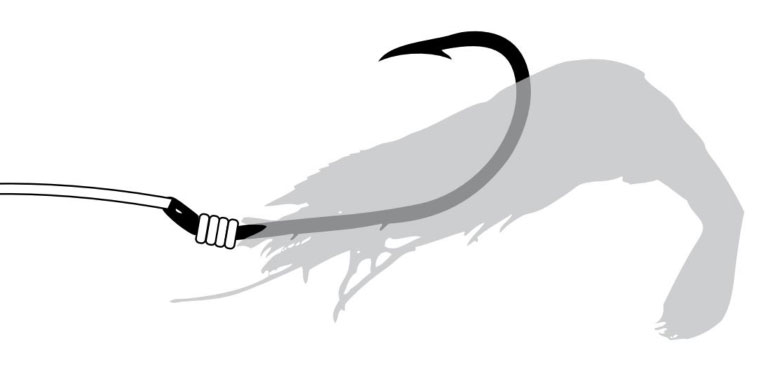If you missed our earlier installments, see Critical Rigging for Beginners, Part I: Critical Rigs and Rigging for Beginners, Part II: Rigging Lures.
What’s the easiest way to fool a fish into biting, whether you're enjoying some Chesapeake Bay fishing, casting in a lake for crappie, or anything in-between? Often, offering it live bait is the ticket. But getting that minnow from your bucket into a fish’s mouth is easier said than done. In fact, there are several ways to make it happen and which will prove most effective may change from day to day or hotspot to hotspot. Ready to get rigging? In our final installment of Rigging for Beginners, we’ll take a look at some of the most common baits and match them up with the rigs and lures we've talked about in other installments of our Fishing for Beginners series.

Live Baitfish
Whether you’re baiting up with a minnow or a menhaden, knowing where to place the hook in the baitfish is critical. The three most common locations include:
- Through the jaws or nose.
- Through the back forward of the dorsal fin.
- Through the back aft of the dorsal fin.
So here we have just three options, but to make matters more confusing, each will prove more or less effective in different scenarios. So, let’s look at each in a bit more detail.

Through the Jaws or Nose of the Baitfish
Siding the hook through the jaws, you’ll want to go in through the lower and out through the upper so the baitfish swims upright. When the hook pops out always check the point to ensure it doesn’t have a scale capping it (a common problem with bull minnow). Remember that you want to go through the jaws, not just the lips, so the bait’s attached firmly. And don’t go too far back through the fish’s skull or you might kill it and lose its appealing wiggle.
Choose the jaw-hooking method whenever you’re attaching a live bait to any form of lure. Adding a bull minnow to a shad dart or bucktail, for example. Jaw hooking is also effective when you’re live-lining the fish on a bare hook, but note that with no additional weight the fish will usually swim at the surface.
Through the Back Forward of the Dorsal Fin
To apply this method insert the hook through the meat of the fish’s back just in front of the dorsal, and push it through so it comes out the other side. Be careful not to go so far down the fish’s back that the bend of the hook is completely filled or it will hinder the point from making a solid hook-up. Instead, go just far enough down the back that when you pop out the other side the hook won’t easily rip through the back.
This method works well when you want the baitfish to swim down in a current without any added weight. It’s also effective in set-and-forget situations, such as when suspending a baitfish under a float and letting it drift, or under a tip-up when ice fishing.
Through the Back Behind the Dorsal Fin
Run the hook through the bait just as you would when hooking froward of the dorsal. This is another method that works well when you want the fish to swim down or are setting it in place and leaving it alone. But never use this method when you’re in a stiff current or the boat is drifting. A live fish being dragged backwards through the water doesn’t look natural, and predators are more likely to look quizzically at a fish moving in reverse than they are to eat it.
Fishing with Worms (Yay!)
What could be more nostalgic than fishing with nematodes? These wiggling wonders are the most numerous multicellular animals on the planet, and countless species of fish love to eat them. How you’ll turn that fact into a bend in your rod depends on a number of variables.
The first thing to consider is the mouth size of your quarry. When fishing with bloodworms for spot (which have small mouths), you’ll catch plenty of fish if you use tidbits. Thread a whole worm on the hook and those little nibblers will merely grab an end and rip it free time after time. When fishing for largemouth bass with nightcrawlers, on the other hand, a whole worm hooked through the collar is the way to go… unless there are lots of bluegill in the area, in which case the mini-mouth critters will likely rip that worm to shreds.
So, what’s the plan of action? Use a big bait for big fish, but when in doubt go minimalistic.
Fishing with Grass Shrimp
Fishing with grass shrimp can be frustrating, because they’re incredibly delicate baits. Cast too hard and they’ll fly off the hook. Miss a nibble and you can bet that your shrimp is gone. But they’re also incredibly effective at times, especially when it comes to perch fishing, and shouldn’t be dismissed.

Whether you’re threading them onto a bottom rig or sweetening up a shad dart, there are two targets to shoot for: you can push the hook in through the bottom of the shrimp’s head and out the top, or in through the bottom of the tail and out through the top. Either way produces bites and neither way stays on the hook all that well — pick your poison, make your casts gently, and if the shrimp are small stack multiples onto the hook.
Fishing with Crab
There isn’t a fish in the bay or ocean that doesn’t enjoy making a meal out of a crab, be it a white-legger in the ocean or one of our treasured Jimmies of the Chesapeake. As a rule, peeler or soft crab are most effective (though there are exceptions, such as when targeting tautog or sheepshead).
Depending on the crab’s size and the size of the fish you’re targeting, you may want to cut it into sections. You’ll want to offer up a chunk small enough for the fish to slurp it down, while still presenting a target large enough to be tempting. For panfish like croaker or perch a single segment of the crab or even a piece of leg may be enough. A bull red drum, meanwhile, probably won’t be interested in anything less than half of a crab.
The best way to get crab to stay on the hook is by sliding the hook into and through a leg socket. In the case of peelers and hard crabs, most anglers will also pop off the hard back-shell and toss it over the side.

There are lots of other live baits out there, ranging from crayfish to clams to eels. And as you become a more advanced angler you’ll probably encounter situations where you’ll want to use them. But this selection of common offerings is more than enough to get you started, and hopefully, turn those baits into big rod-bending bites.